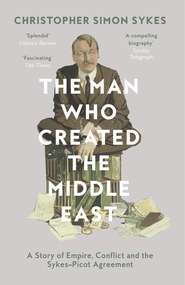По всем вопросам обращайтесь на: info@litportal.ru
(©) 2003-2025.
✖
The Big House: The Story of a Country House and its Family
Настройки чтения
Размер шрифта
Высота строк
Поля
Of an open and ingenuous mind
In her Judgement of others candid
Zealous & sincere in the discharge of all conjugal duties
In the care of her children tender and affectionate
To her Servants kind & indulgent etc. etc.
It was written from the heart and he accepted its shortcomings. ‘This Character not being in Rhime,’ he wrote, ‘nor Poetical, & perhaps too long for the Present Taste, may be improper for an Epitaph; yet I choose to leave it, as a Testimony of my affection & love for, & the High Opinion I had of her. And I sincerely believe the whole to be strictly & fully true.’
(#litres_trial_promo)
Tatton made no mention of his grandmother’s funeral in his diary, entries in which show that, outside working at the bank, he was becoming more and more tied up with his horses. ‘My brown mare foaled a Filly,’ he wrote on 26 March, and noted excitedly the details of its sire, Guido: ‘a bright bay Horse, full fifteen hands, one inch high with a deal of Bone, remarkably temperate and quiet to ride & leaps well; was bred by the Duke of Queensbury. Guido at four years old won the Revolution Stakes of 200 guineas each at Newmarket beating eight others … Guido twice beat the famous mare Dido.’ As the year wore on more foals were born, physick was administered on a regular basis, and in the summer months, when fashionable society was gathering in the spas, taking the waters and attending assemblies and balls, the only balls mentioned by Tatton were those of a medicinal nature, such as on 18 July, when he began his mare on a course of ‘Taplin’s Cordial Balls and a Mash Morning and Night’, or on 11 August when ‘my Mare had a Ball. I went and dined at Welton. My Mother, brother and Sisters were there. Returned at Night.’
All the while that Tatton was serving his apprenticeships, Mark, who was being groomed to inherit everything his father had created, remained at Oxford to round off his education. According to a letter written to Christopher in June, 1790 by his then tutor at Brasenose, the Revd George Harper, in which he spoke of Mark’s desire ‘to gain your esteem and confidence’, he came close to being a perfect student. He was attentive to lectures ‘during the whole of Lent & the first part of the Easter Terms’, mixed with a group of ‘respectable and ingenious men’, and could now, wrote Harper, ‘number among his intimate acquaintance some of the most valuable persons in this place’. However, what prevented him from giving ‘an absolute and unqualified approbation of his conduct’ was the fact that ‘there still remains on his mind a boyish improvidence …’
(#litres_trial_promo)
The Revd Harper appears to have been somewhat naive in his approval of Mark’s set, for the one thing that they appear to have been most ingenious about was in parting their rich young friend from his money. Christopher was obliged to engage a new private tutor for Mark and to send them both into the country to study in a rented cottage. ‘I cannot conceive how he contrived to spend so much money in the University,’ wrote George Halme to his employer, on 30 September, 1790. ‘He did not appear extravagant when I was in College, but in Oxford, though one hardly expects it amongst Gentlemen, there are numbers ready to take advantage of generosity and inattention: a few of that description, I suspect, assisted him spending his money and his time.’ In the new situation in which Mark found himself, living in a country village, ‘his pocket expenses cannot be very great,’ Halme assured Christopher, ‘as there are no temptations to spend his time which is not spent in his own improvement’.
(#litres_trial_promo)
Mark managed to rein in his extravagance during the rest of his father’s lifetime and after he left Oxford he did everything he could to gain his approval. He became engaged to a local heiress, Henrietta Masterman, the only daughter of Henry Masterman of Settrington Hall, near Malton. Orphaned when she was only five years old, Henrietta was heir to the Settrington Estate, which included two houses: an Elizabethan manor house, enlarged about 1703, and a new rather austere neo-classical mansion, still partly under construction, which was intended to replace it. She was five years older than Mark, and, being a close neighbour, had known him for some time. She was well educated, spoke and wrote French, and wrote novels in her spare time. It was a love match and one the family warmly approved of. ‘I can assure you we are all extremely anxious to hear how you go on,’ his younger sister Decima wrote to him in June, 1795, ‘& I hope you will relieve us from our anxiety as soon as it is in your power.’
Decima, who was herself on the point of marrying a neighbour, John Robinson Foulis, the second son of Sir William Foulis of Ingleby Manor, York, was evidently alone at Sledmere with her parents, and the strain of sitting around for days on end with very little to do was beginning to show. ‘I long to see you again either married or unmarried,’ she told him, ‘as at present we are left entirely to ourselves & as you know well to our devout conversations which are still very numerous. I have nothing more to say of any consequence & will only add the anxious wishes for your lasting happiness.’
(#litres_trial_promo) Mark and Henrietta were married on 11 November, in the church of Holy Trinity, Micklegate, York, where Henrietta had herself been baptised in October, 1766.
On the following day, 12 November, ‘the morrow of St Martin’, Mark, aged twenty-four, was nominated as High Sheriff of Yorkshire. It was a prestigious post and Christopher was so delighted that he agreed to pay for the considerable expenses that were involved. The cost of fitting out the sheriff and his retinue alone came to £355, which included £80 for horses, £35 for a coach, £19. 11s. for a banner, £68. 18s. to his tailor, £80. 18s. for silks & velvets etc, £26. 18s. for lace, £18. 18s. to the shoemaker, £9. 12s. to the hosier and £15. 12s. for buckles. By the end of the year, the total costs had amounted to the huge sum of £1,077. 17s. 6d.
(#litres_trial_promo)
After the wedding Mark and Henrietta went to live at Settrington, and in September of the following year, as co-heir to his wife’s property, he adopted the name of Masterman to run before Sykes. Since Settrington was only ten miles from Sledmere, there was much toing and froing between the two houses. ‘Lady Sykes with Mrs Sedgewick, Miss Charlotte the lovely, & Mrs Crockay, your little Flirt, dined with us on Thursday,’ wrote Henrietta to Tatton, soon after her marriage. ‘Chr. also and Miss Crofts; & on Saturday she took her whole phalanx of Ladies, the above, Miss Langfords and my Sister to Heslerton.’ Henrietta seems to have struck up a particularly close relationship with Tatton, of all Mark’s siblings. ‘Fie on the lame Horse or the lazy Master, My dear Tatton,’ she wrote to him in the same letter, referring to an occasion when she and Mark had ridden over to Sledmere to see him and he had failed to appear, ‘for you have between you grievously disappointed all here especially My Saint and I who came over Saturday evening with a fair Wind and light Sailing to meet you. I in particular was in such a Merry way at the thought of so soon shaking hands with you …’ If his horse, ‘the unworthy Beast’, went lame again, she continued, then rather than be disappointed once more, she would send over her own mount, ‘my Old Brilliant’, to fetch him. ‘She will canter you over, sail foremost, from Dagger Lane in a tangent.’
It appears from this letter that she and Tatton may have formed some kind of sentimental friendship, for she refers to him as her ‘Pet’ and thanks him for a ring he sent her, set with a lock of his hair, which she is now wearing. ‘It shall never be taken from thence till the Wearer of it be dead,’ she assures him, continuing ‘This promise, slightly as it be made, I hold as sacred as the Friendship I long ago gave you without Reserve.’ She returns the compliment, sending him ‘Another, sett in the very same manner’, which she begs him to wear ‘until the hair of some Lady yet in the clouds, & justly preferred, has a stronger claim to its place.’ She finishes her letter by telling him that his sister, Elizabeth, wants his opinion on a horse. ‘Elizabeth, with her love, bids me tell you she has got a new horse, with a long tail, but will neither pass her opinion, nor mount it till you have been here.’
(#litres_trial_promo) Tatton’s close friendship with the Masterman Sykeses is further borne out by the fact that when they were painted by Sir Thomas Lawrence in 1805, he was included in the portrait.
On the death of Mark’s father, in September, 1801, the Masterman Sykes’s moved from Settrington into the newly completed Sledmere, though they kept the former as a second residence. The ‘improvidence’ which Mark had shown as a young man, and which he had so carefully reined in during his father’s last years, was now let loose. He inherited an estate that, in spite of the considerable annual income brought in from rents, was saddled with debts of over £30,000. This was because, to Christopher, rising incomes were an excuse to spend more on his land and increase investment. He saw the debt as a temporary necessity. Mark, however, did not share his father’s interest in agriculture. His interests were sport and books. Unfortunately for Sledmere, he was also a prolific gambler.
Within a few months of inheriting the estate he had saddled it with a debt that came close to being ruinous. Mark lived in an age when eccentric wagers between gentlemen were a common occurrence. No incident was too trivial to bet upon; the colour of a horse, the next day’s weather, the distance a man might walk, the impending birth of a child were all topics that might be the subject of a bet. A favourite speculation was on how long a man might live and the old betting book at White’s Club is full of such wagers. On 8 October, 1746, for example, Lord Montfort bet Mr Greville 100 guineas that Mr Nash would still be alive on the same day in four years’ time, while on 4 November, 1754, ‘Lord Montfort wagers Sir John Bland one hundred guineas that Mr Nash outlives Mr Cibber.’
(#litres_trial_promo) In a similar tome at Brooks’s Club, one member bet another 500 guineas to ten that none of the Cabinet would be beheaded within the following three years.
(#litres_trial_promo)
As the new landlord, Mark made it his duty during the first few months of his arriving at Sledmere to entertain his neighbours and tenants to supper. Among these were the various members of the clergy whose parishes lay within the estate’s boundaries. On 31 May, 1802, it was the turn of the Revd James Gilbert, rector of the adjoining village of Kirby Grindalythe, and during the course of the evening a heated debate took place on a subject which was on everyone’s mind at the time, namely the threat posed to Britain by Napoleon Bonaparte, the terror of Europe. A majority of the guests present, including the Revd Gilbert, took the view that in spite of the recent signing between the English and the French of the Treaty of Amiens it was only a matter of time before France attempted an invasion of England. Mark had a quite different theory. In his opinion, Bonaparte’s position was less secure than it looked because ‘the very atmosphere that [he] breathed was fraught with treason’, and even if he were to escape death in the hazardous pursuit of his ambitions then he would be killed by an assassin.
At this point in the proceedings, Gilbert stood up, no doubt less than steadily after the imbibing of large quantities of port, and in no uncertain terms expressed his belief that his host was wrong and that Bonaparte would in all likelihood live to see the achievement of his plans. So strong was his conviction on this point that he would lay a wager on it, there and then, of 100 guineas, on the condition that Sir Mark would agree to pay him one guinea a day for every day that Napoleon lived. ‘Done!’ cried Mark, in the excitement of the moment. Though the other guests present showed their disapproval of the proceedings with cries of ‘No, no, no wager!’ neither their host nor the rector chose to listen to them. The die was cast.
(#litres_trial_promo)
As it happened, Mark’s belief that Napoleon would be assassinated was not some foolish fancy. There had already been two attempts on his life, the second of which had come dangerously close to succeeding. The first, which took place in Paris on 10 October, 1800 and involved the Adjutant-General, Arena, and a Roman sculptor called Ceracchi, was a plot to knife him in his box at the opera while he was attending the first performance of Salieri’s Les Horaces. It was foiled by the arrest of the conspirators during the production. On Christmas Eve, he had a much closer brush with death when, en route to watch Haydn’s Creation, a bomb, ignited by three Breton royalists, Limoëlan, Saint-Réjant and Carbon, exploded in the Rue Saint-Nicaise as his coach passed close by. The windows of the coach were all smashed but miraculously Napoleon escaped without injury, though nine people were killed and twenty-six injured in the blast.
On the morning of 1 June, the day after the wager was laid, the Revd Gilbert, evidently a wealthy as well as an honest parson, sent his patron the princely sum of 100 guineas. On 8 September, with no sign of Bonaparte succumbing to an assassin, Mark returned the money and began the slow process of paying his part of the wager, seven guineas per week. The days rolled by, and as the warlike activities of the French increased and they consolidated and extended their domination of Europe in Holland, Switzerland and Italy, it became apparent that the so-called peace was nothing more than an uneasy truce. In May, 1803 the British declared war on France and with the threat of invasion once again raising its ugly head the government began the mustering of troops up and down the eastern maritime counties. The East Riding coast, though a considerable distance from the main body of French troops at Boulogne, was so perfect a potential landing place that there was a strong possibility the enemy might try their luck there. Up and down East Yorkshire, disbanded units of militia were reformed, including the Yorkshire Wolds Gentlemen and Yeomanry Cavalry, formerly commanded by Sir Christopher Sykes. Mark was its new commander and he raised 300 men, equipping them with a smart uniform of scarlet, with green facings.
Вы ознакомились с фрагментом книги.
Приобретайте полный текст книги у нашего партнера:
Приобретайте полный текст книги у нашего партнера:






